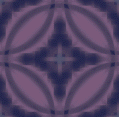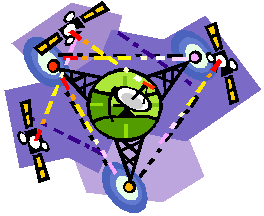LITR 4232 American
Renaissance

LITR 4232 2008 final exam
Essay Answers to Question
4: Classic, popular, and
representative literature
Cheryl Romig
Don’t Box Me In! Categorizing American Literature
It is easy to define classic literature as “stuff you read in class” or “what teachers make you read” and popular literature as “what I want to read” or “this is what my non-reading friends like to read.” However, classification is not that easy. For the purpose of this essay, I will borrow definitions from the website and Elizabeth Williams’ final exam.
Classic literature requires more than just a surface reading. While advanced readers and literature majors particularly enjoy the level of complexity, these works demand re-reading and deeper levels of thought to break down the meaning implied. Since close reading is a skill, average people do not want to take the time or effort to glean all of the art and information from a classic work. In this vein, Hawthorne’s works, at first glance, can be taken as just dark, gothic stories, but the moral complexities and social critiques would be lost and the work rendered meaningless. Classic authors imbue meaning in every word and phrase of their texts. If something is in the work, it serves a greater purpose to the whole of the piece. Classic texts often create problems that cannot be easily worked out, and this is a good thing!
Classic authors are not as concerned with popularity among the common man as they are about their art. Emerson was not trying to sell a vacation to the country; he was trying to discuss the pantheism in nature and the correspondence with humanity. To know if this is a popular or classic theme, simply repeat that last sentence to a non-literary friend, and when their eyes glaze over, you know it is a classic sentiment. The classics were, at the time they were written, controversial and pushed the envelope in liberal thinking. This is seen in modernity as well as the banned book list consists almost entirely of classic literature.
This type of literature also deals with aesthetics, or the form of composition. Because of this, poetry tends to fall into this category. Whitman and Dickinson come to mind when discussing American poetry. They focus not only on the forms of poetic device, but their content conveys deep meaning that might take a conventional subject and treat it differently than those previous. However, Whitman might also be categorized into popular literature for “When Lilacs Las in the Dooryard Bloom’d” and “O Captain, My Captain” as these works comforted a nation reeling from President Lincoln’s assassination.
Popular literature tends to be categorized by academia as escapist literature. These works tend to be easier to read and are usually consumed purely for pleasure. Popular works from different times can be studied to determine what the public moods and interests were. What we read today will tell scholars tomorrow who we were and what we were like. Modern examples of popular literature can be seen on the New York Times’ best seller list and include The Da Vinci Code, Harry Potter and Twilight. Irving’s short stories “Rip Van Winkle” and “The Legend of Sleepy Hollow” were even more popular when they were first written than they are today, even though most everyone has a working knowledge of these stories, and “Sleepy Hollow” was made into a movie. The ability to easily make a book into a movie without having to worry about how to express complex themes is another indicator of popular fiction. Cooper’s Last of the Mohicans was wildly popular in American fiction and has been made and re-made into movie form several times. However, Cooper’s focus on race, the gothic, and the sublime lend Mohicans to both the popular and the classic.
Poe and Stowe also blur the lines between classic and popular literature. Like Whitman, they deal with weighty subjects in a way that is appealing to the greater public, or these authors concentrate on such popular subjects that the general community does not mind the innovative or complex way in which it was addressed. Poe’s gothic stories are read by the populous as ghost stories told by an eccentric, while the academic crowd looks at his themes of death, love, longing, friendship, revenge, and others with seriousness and sincerity. Stowe is probably the best example of authors that are firmly rooted in both the classic and the popular. Stowe’s Uncle Tom’s Cabin was a pioneering novel that dealt with its subject matter in a new way, and it resonated with a country obsessed with the question of slavery.
Popular literature can also blend with representative literature. Frederick Douglass has been popular while embodying the sentiment of representative literature. Until recently, society and academia have mainly only acknowledged white, male writers. Because of this, there has been a movement of the last thirty years to represent previously marginalized groups, such as women and blacks, in literature classes. Douglass, Sojourner Truth, and Harriet Jacobs are shining examples of representative literature. Sojourner Truth and Harriet Jacobs have the honor of representing not only African Americans, but women as well. Fuller can also be placed in this category. Representative authors act as spokesmen for a people during a period of time and provide an alternative to the mainstream point-of-view. However, this movement sometimes keeps some of these authors as being considered classics simply because of their race or gender, and that is against the very spirit of the movement. Yet, this is not always true, as Stowe fits into this category due to her sex, as well as in classic literature due to her work.
Representative literature has become exceedingly popular in public school classrooms as it helps diversify curriculum. Minority students can identify with these authors, and officials hope it will help to de-marginalize these students. Also, students who are exposed only to mainstream thought gain a comprehensive view of the world. Popular and classic literature is also presented in classrooms, but with sensitive parents and banned book lists, it is becoming exceedingly difficult for teachers to expose students to controversial literature. It is part of the role of higher education to fill this gap in learning and exposure created by public elementary and secondary schools.
|
|
|
|


